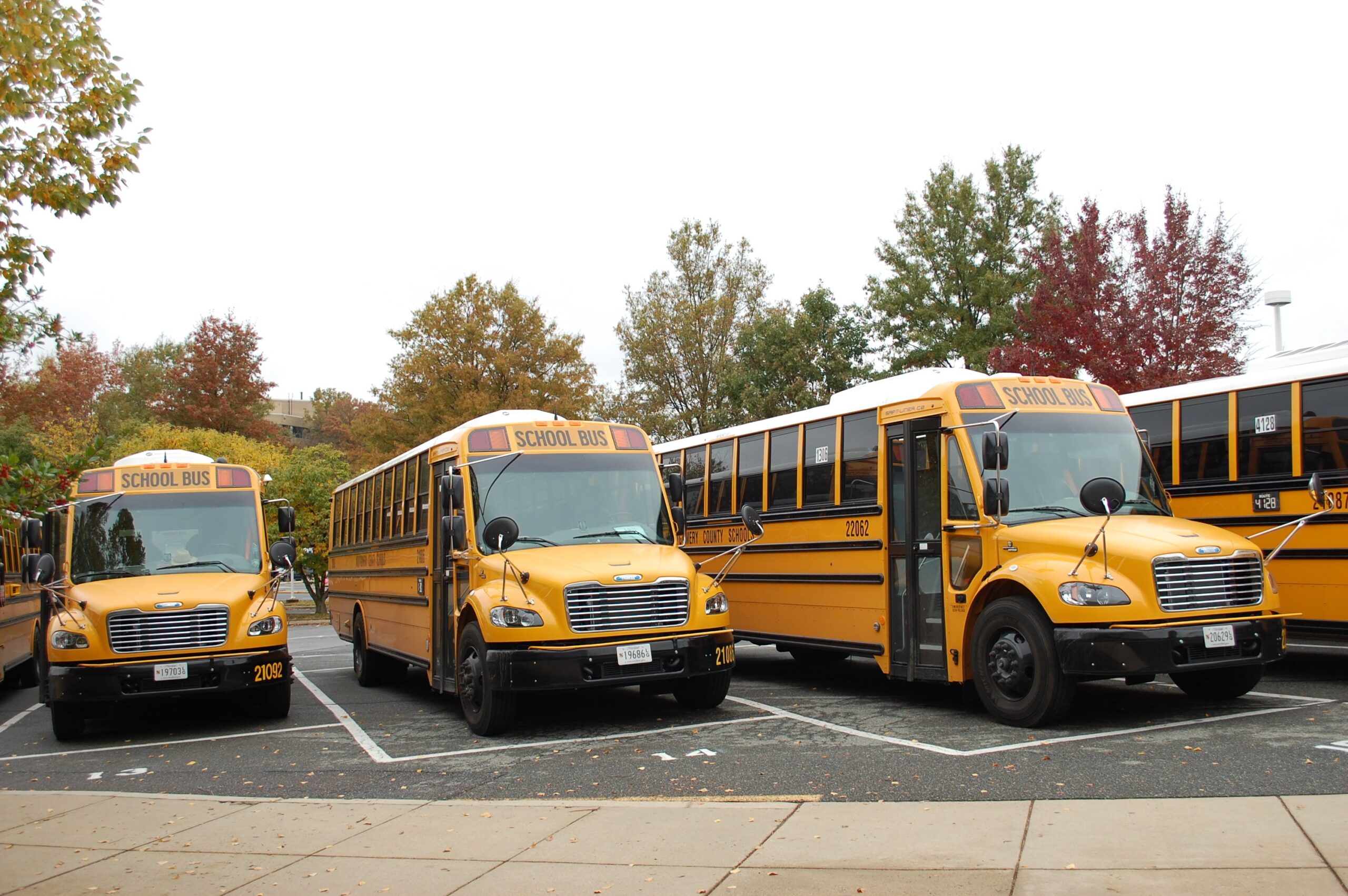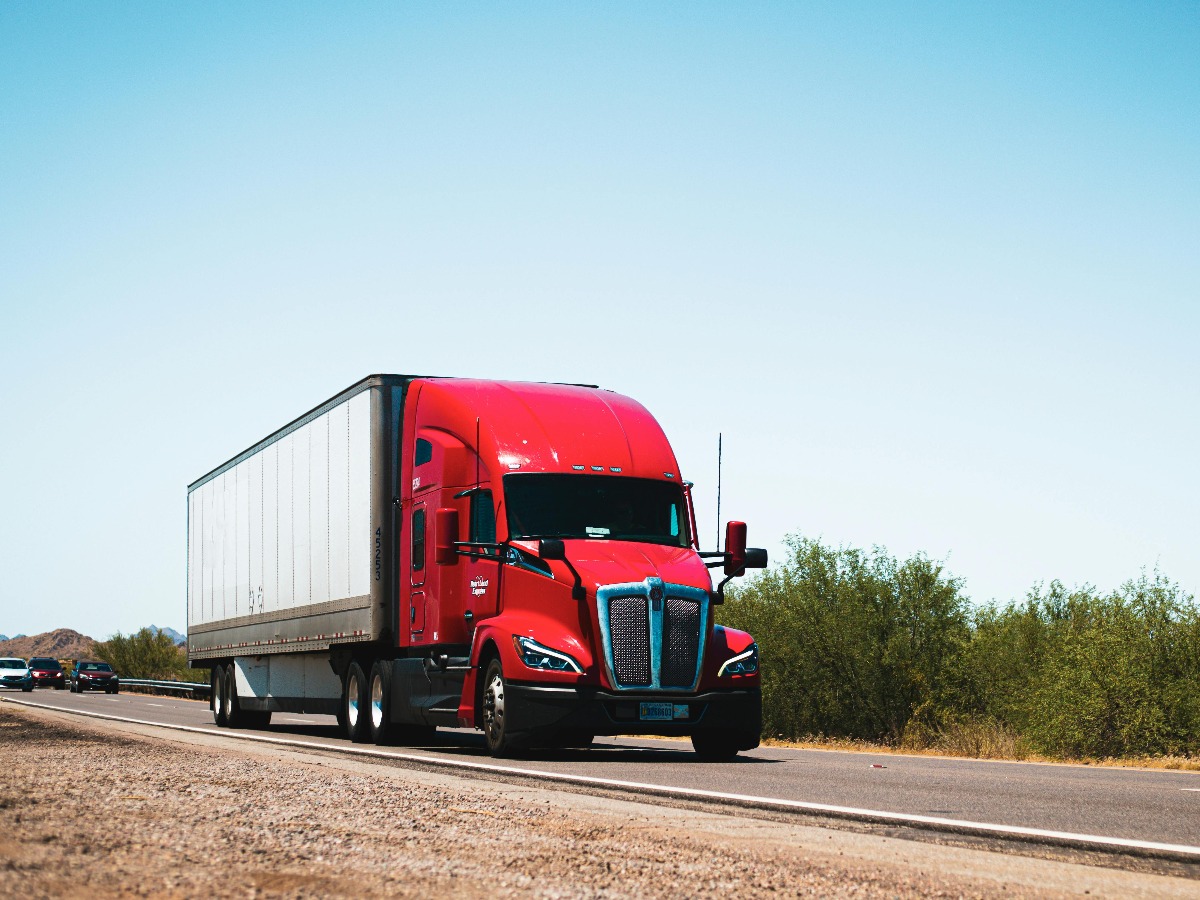AI Predictive Speed Control: Prevent Accidents Before They Happen
Nov 11, 2025 Resolute Dynamics
Road safety isn’t just about reacting to danger—it’s about predicting it before it ever shows up. That’s the big promise behind predictive speed control powered by artificial intelligence (AI). In today’s world, where vehicles are getting smarter, AI is stepping in to make sure our roads are safer, not just faster.
Let’s dive into how predictive speed control works, how companies like Resolute Dynamics are using it, and what it means for drivers, passengers, and entire fleets.
The Evolution of Vehicle Safety

A few decades ago, speed control meant trusting the driver’s judgment. Then came speed limiters—devices that capped how fast a vehicle could go. Now, with AI, we’re entering a whole new era.
Today’s systems don’t just limit speed. They adjust it proactively, using real-time data, environmental awareness, and terrain-based intelligence. It’s not just about following rules; it’s about preventing danger before it happens.
Companies like Resolute Dynamics are leading this change with products like dual speed limiters, GPS tracking systems, and smart monitoring for fleets and school buses.
What Is Predictive Speed Control?
Predictive speed control uses AI to adjust vehicle speed based on what’s likely to happen—not just what’s happening now. It combines multiple data sources like:
-
GPS and geolocation data
-
Traffic and road conditions
-
Driver behavior patterns
-
Terrain analysis
By processing this information, the system can slow down a vehicle before it reaches a sharp turn, a school zone, or a slippery road. It’s like having a digital co-pilot who sees further than the human eye.
How AI Predicts Driving Risk Before It Happens
Artificial Intelligence (AI) is changing how vehicles stay safe on the road. Instead of simply reacting to danger—like slamming the brakes after spotting a pedestrian—AI systems are now capable of predicting risky situations before they even occur. This is possible through a combination of machine learning, sensor fusion, and real-time data analysis.
Here’s a closer look at how AI anticipates driving risks in real time:
1. Terrain Analysis Through Digital Mapping
The system uses terrain-aware algorithms to study the upcoming road surface. By tapping into digital elevation models and high-definition maps, it can identify:
-
Sharp bends and blind curves
-
Steep inclines and downhill slopes
-
Gravel roads or off-road patches
-
Bridge entrances or elevated areas
When these risky features are detected ahead, the AI adjusts the vehicle’s speed in advance, reducing the chance of skidding, oversteering, or brake failure.
2. Real-Time Traffic Data Monitoring
AI taps into live traffic feeds—often powered by cloud-connected systems like GPS, cellular networks, and vehicle-to-vehicle (V2V) communications. It identifies patterns such as:
-
Congestion and bottlenecks
-
Road closures or detours
-
Slow-moving or stopped vehicles
-
Unexpected lane changes or weaving traffic
By reading this data, the system creates a predictive traffic model that helps it anticipate sudden slowdowns or obstructions ahead. Speed is then reduced accordingly, avoiding abrupt braking or dangerous maneuvers.
3. Behavioral Pattern Recognition (Driver Profiling)
AI learns how a specific driver behaves behind the wheel. Using telematics and CAN bus data (vehicle data network), it tracks patterns like:
-
Hard braking or sharp turns
-
Aggressive acceleration
-
Frequent lane changes
-
Distraction or fatigue signs
When the system notices high-risk behavior (especially repeated habits), it uses predictive modeling to reduce speed in situations where that behavior might lead to loss of control—like during wet weather or in urban zones.
4. Environmental Condition Awareness
AI systems are now connected to external weather databases and use onboard sensors like rain detectors, temperature gauges, and light sensors. These systems consider:
-
Rain, snow, or fog conditions
-
Low-light or night driving
-
Icy or slippery roads
-
Glare or poor visibility
In response, the AI system dynamically recalibrates the safe speed range. For instance, it will slow the vehicle when entering a fog bank, even if the road ahead looks clear to the human eye.
5. Building a Dynamic Risk Profile
All the data mentioned above—terrain, traffic, driver behavior, and environment—is continuously processed to form what’s called a dynamic risk profile. This profile changes second by second. When the AI detects that the risk threshold is approaching a critical level, it can automatically:
-
Lower the speed limiter
-
Trigger driver alerts
-
Recommend route changes
-
Activate emergency braking assistance
For example, if a school zone is detected ahead via geofencing and the vehicle is traveling above the safe limit, the system will reduce speed without waiting for driver input. Similarly, if the road is wet and the driver approaches a bend too quickly, the limiter will step in preemptively.
Technology in Action: Dual Speed Limiters & GPS Tracking
The real power of predictive speed control becomes clear when it’s applied in real-world driving. Resolute Dynamics leads the way with its Dual Speed Limiter and GPS Tracking System—two advanced technologies working hand-in-hand to make roads safer, smarter, and more compliant with local regulations.
Let’s break down how these systems function and the value they bring to different industries.
What Is a Dual Speed Limiter?
A Dual Speed Limiter is a smart device installed in a vehicle that can automatically adjust and enforce two different speed limits—one for urban environments and another for highway or off-road terrains. This isn’t just about limiting top speed—it’s about context-aware speed governance.
These devices are designed to detect the type of road the vehicle is on and apply a pre-set speed threshold. For instance:
-
In urban or school zones, it may restrict the vehicle to 30 km/h.
-
On open highways, it allows speeds up to 80 or 100 km/h, depending on what’s legally and operationally safe.
What makes this unique is the terrain-based zoning capability—a built-in intelligence that reads the road context and switches between speed modes without the driver needing to do anything.
How GPS Tracking Enhances the Limiter’s Intelligence
The Dual Speed Limiter is even more powerful when paired with GPS tracking technology. With high-precision geolocation systems installed in the vehicle, the limiter doesn’t just guess—it knows exactly where the vehicle is, in real-time.
Using geofencing and map-based logic, the GPS system tells the speed limiter:
-
What type of zone the vehicle has entered (e.g., residential, industrial, mountainous)
-
Whether it’s within a restricted area like a school zone or construction site
-
If the terrain is steep, slippery, or dangerous
-
When to automatically lower or raise the vehicle’s top speed
This synergy between location data and speed regulation creates a predictive system that is constantly adapting to its surroundings—far beyond the capabilities of a traditional speed limiter.
Built-In Predictive Logic for Risk Prevention
What truly sets these systems apart is their predictive behavior. They don’t wait for a driver to make a mistake—they anticipate risky conditions based on data, and act before an incident can occur.
For example:
-
If a vehicle is approaching a school zone during school hours, the GPS module triggers the limiter to reduce the speed automatically, regardless of the driver’s intent.
-
On a mountain pass with high accident rates, the limiter recognizes the risk zone and imposes a lower speed threshold.
This type of data-informed automation removes the human error factor, which accounts for over 90% of road accidents globally.
Fleet Monitoring and Managerial Insights
From a fleet management perspective, the GPS tracking component unlocks a new layer of operational visibility:
-
Driver Behavior Analytics: Track patterns like harsh braking, speeding, or idling time.
-
Route Auditing: Review route history for logistics optimization.
-
Compliance Reports: Automatically generate reports to meet transportation safety regulations.
-
Real-Time Alerts: Get notified if a vehicle enters restricted zones or exceeds set speed thresholds.
These features not only improve safety but also reduce fuel costs, maintenance expenses, and legal liability.
Use Case Scenarios: Who Benefits the Most?
School Buses

School buses are high-stakes vehicles where safety is non-negotiable. The Dual Speed Limiter ensures drivers slow down in sensitive zones. GPS data also helps administrators monitor punctuality, stops, and speed compliance—offering transparency and trust for parents and schools.
Fleet Vehicles (Logistics & Transport)
Logistics fleets often operate across varied geographies—urban, rural, and off-road. The terrain-based limiter keeps vehicles within safe speed boundaries, even when drivers are unfamiliar with the route.
Transport & Insurance Companies
Insurance claims related to speeding and reckless driving can cripple businesses. Predictive speed systems reduce these incidents dramatically, leading to lower premiums and fewer legal issues. They also provide data to prove compliance in the event of disputes.
Benefits of Predictive Speed Control
Predictive speed control systems are more than just high-tech tools—they’re intelligent safety companions that reshape how vehicles behave on the road. By blending AI, GPS, and environmental sensing, these systems create a driving experience that’s safer, smoother, and smarter.
Here’s a deeper look at the key advantages:
1. Fewer Accidents Through Proactive Intervention
Traditional speed control systems react after a risky event begins—like applying brakes once a car skids. Predictive systems act before the danger starts.
By analyzing terrain, traffic, and driving patterns in real time, AI systems identify potential hazards and automatically adjust speed. For example:
-
Reducing speed ahead of a sharp curve
-
Slowing down in rain or low visibility
-
Enforcing limits near schools or pedestrian zones
These micro-adjustments prevent high-risk situations from escalating, significantly reducing the chances of:
-
Rear-end collisions
-
Skidding and rollover accidents
-
Speed-related fatalities
2. Lower Maintenance Costs from Reduced Wear & Tear
Aggressive driving behaviors—like rapid acceleration, hard braking, and sharp cornering—are major causes of premature vehicle damage. Predictive speed control systems limit such behavior by smoothing out driving patterns.
When the system maintains a consistent, context-sensitive speed, it protects:
-
Brake pads and tires from excessive stress
-
Transmissions and engines from overheating
-
Suspension systems from rough road impact
Over time, this leads to:
-
Fewer workshop visits
-
Lower repair bills
-
Extended vehicle lifespan
3. Better Fuel Efficiency Through Smarter Speed Control
Fuel efficiency drops when drivers constantly speed up and slow down. Predictive systems use data from real-time GPS tracking and road condition awareness to maintain steady speeds, especially in stop-and-go environments.
This smoother driving style means:
-
Reduced engine load
-
Less idling and over-revving
-
Optimized gear shifting (in automatic systems)
For fleet operators and logistics companies, this can translate into thousands in annual fuel savings, making predictive control a cost-effective investment.
4. Improved Regulatory Compliance
Speeding is not just dangerous—it’s often illegal. Across many countries, especially in the Middle East, Asia, and Africa, regulations now mandate the use of speed limiters in commercial vehicles.
Predictive speed control systems go a step further by:
-
Adapting to local speed laws automatically
-
Enforcing limits in restricted areas like school zones or highways
-
Providing timestamped reports for inspections or audits
-
Alerting supervisors if drivers override safety parameters
This ensures that transport companies avoid fines, vehicle impoundments, or license suspensions due to non-compliance.
5. Improved Driver Behavior Through Real-Time Feedback
Drivers often underestimate how their habits affect safety and vehicle health. Predictive systems don’t just automate responses—they educate drivers over time.
Many systems come with driver scoring dashboards or mobile apps that:
-
Highlight risky behaviors like overspeeding or harsh braking
-
Offer suggestions to improve driving patterns
-
Reward consistent safe behavior with recognition or incentives
This creates a culture of accountability and encourages drivers to stay mindful behind the wheel, which in turn lowers accident rates and improves overall team performance.
6. Autonomous Adaptation in Remote and Hazardous Environments
One of the underrated benefits of predictive control is its reliability in remote regions where manual supervision isn’t possible.
In deserts, hilly terrain, construction zones, or rural routes, predictive systems can:
-
Autonomously limit speed in dangerous conditions
-
Replace the need for roadside speed enforcement
-
Provide location-based insights to control centers
This gives peace of mind to fleet managers and regulators who can’t monitor every mile in person.
Use Cases by Industry

1. School Transportation
In school zones, children can be unpredictable. Predictive systems slow buses down automatically in school zones, making them safer for students and giving parents peace of mind.
2. Fleet Management
Fleet managers often deal with long routes and varying terrains. Predictive speed control adjusts based on conditions, reducing the chance of accidents and breakdowns.
3. Vehicle Workshops
Smart lift monitoring systems, like those from Resolute Dynamics, ensure safety even when vehicles are in the shop. These systems monitor lift operations and ensure proper weight distribution and function.
The Future of AI-Driven Speed Governance
We’re entering a new era in transportation—one where vehicles don’t just move; they think, learn, and decide. Predictive speed control is evolving fast, and soon, it will become a critical part of a much bigger system: AI-driven speed governance. This future is being shaped by a powerful combination of cloud computing, vehicle-to-everything (V2X) communication, big data, and autonomous decision-making.
Let’s explore what’s coming next and how it will transform the way we drive, manage fleets, and protect lives on the road.
1. Cloud-Connected Intelligence: Real-Time Speed Logic
Right now, most speed limiters and predictive systems rely on pre-set rules and onboard data. But in the future, vehicles will be connected to the cloud 24/7, allowing them to:
-
Access live road condition updates
-
Download new geofencing maps and traffic regulations instantly
-
Share and receive data from other vehicles or traffic networks
Imagine this: A truck in Dubai drives over an oil spill and instantly sends that information to the cloud. A school bus five miles behind receives the update and slows down before it even sees the hazard. That’s the power of real-time, connected AI speed control.
2. Vehicle-to-Vehicle and Vehicle-to-Infrastructure (V2X) Communication
AI-driven speed governance will depend heavily on V2X technologies. This means vehicles will be able to “talk” to each other and to the infrastructure around them.
With this, vehicles will know:
-
When another car is speeding or braking hard
-
When traffic lights are about to change
-
If a pedestrian is crossing at a smart crosswalk
-
When a crash has occurred nearby
This interconnected ecosystem will allow AI systems to adjust speed dynamically, creating smoother traffic flow and reducing stop-and-go movement. It also means less risk of collisions and road rage incidents caused by sudden decisions.
3. Advanced AI and Predictive Risk Modeling
The future will bring much more powerful AI than we have today. Instead of reacting to simple inputs like speed zones or weather, future AI will:
-
Predict where traffic jams will likely form before they do
-
Anticipate driver fatigue based on biometric feedback
-
Understand how seasonal or cultural events affect road safety
-
Use AI simulations to test different speed responses in real time
This predictive modeling will go far beyond current systems. It won’t just stop the car when a problem appears; it will prevent the problem from ever happening in the first place.
4. Integration with Autonomous Vehicles and ADAS
Autonomous vehicles are coming—fast. These self-driving machines won’t rely on human judgment, which means their safety systems need to be flawless. AI speed governance will play a central role in how they:
-
Enter or exit traffic safely
-
Adjust speed during lane changes
-
Handle unexpected hazards without panic
-
Make ethical choices during unavoidable collisions
In Level 4 and Level 5 autonomy (fully self-driving vehicles), Advanced Driver-Assistance Systems (ADAS) will work hand-in-hand with predictive speed control. This allows vehicles to:
-
Maintain safe distances
-
Avoid erratic maneuvers
-
Prevent speeding in restricted areas without being told
5. Government Regulations and Public Safety Infrastructure
Governments around the world are already moving toward adopting AI-based vehicle safety systems. We’re seeing policy changes that support:
-
Mandatory speed limiters for commercial and heavy vehicles
-
Smart traffic lights that communicate with vehicles
-
School zone geofencing that’s updated in real time
-
Public investments in smart highways and AI traffic command centers
As AI-powered systems become proven tools for reducing accidents and fatalities, legislation will follow. In some countries, we can expect to see laws requiring predictive speed controls in:
-
Buses and taxis
-
Ride-hailing vehicles
-
Emergency response fleets
-
Logistics and freight transport
This will not only improve compliance but also help governments collect anonymized road behavior data to improve city planning and infrastructure investment.
6. The Road Ahead: Safer, Smarter, and More Predictable
The end goal of AI-driven speed governance is to create a road ecosystem that protects itself. With cloud data, machine learning, and universal vehicle connectivity, we’ll move from human-dependent decisions to automated safety enforcement—without removing control from drivers completely.
In the future, you might not even notice your vehicle slowed down in a dangerous area. But behind the scenes, thousands of signals and sensors will be working together to make that choice in real time, keeping you safe while you focus on the journey.
Why Choose Resolute Dynamics for AI Speed Solutions
Resolute Dynamics stands out for a few reasons:
-
Precision engineering behind every product
-
Terrain-based dual speed limiters that adapt to real-world conditions
-
GPS tracking that gives live insights
-
Custom solutions tailored for buses, fleets, and workshops
-
A global presence across UAE, India, Canada, Saudi Arabia, and more
Their systems are backed by quality assurance and built to handle diverse climates and terrains, making them ideal for real-world challenges.
Conclusion: The Road Ahead Is Smarter and Safer
Predictive speed control powered by AI is no longer a futuristic dream—it’s here now, helping prevent accidents before they happen. By combining real-time data, smart algorithms, and GPS systems, we’re moving toward roads that are safer for everyone.
Whether you’re managing a fleet, running a transport company, or just want safer streets around schools, predictive AI systems are the next big thing in automotive safety.
The future of driving isn’t just about speed—it’s about smart speed.